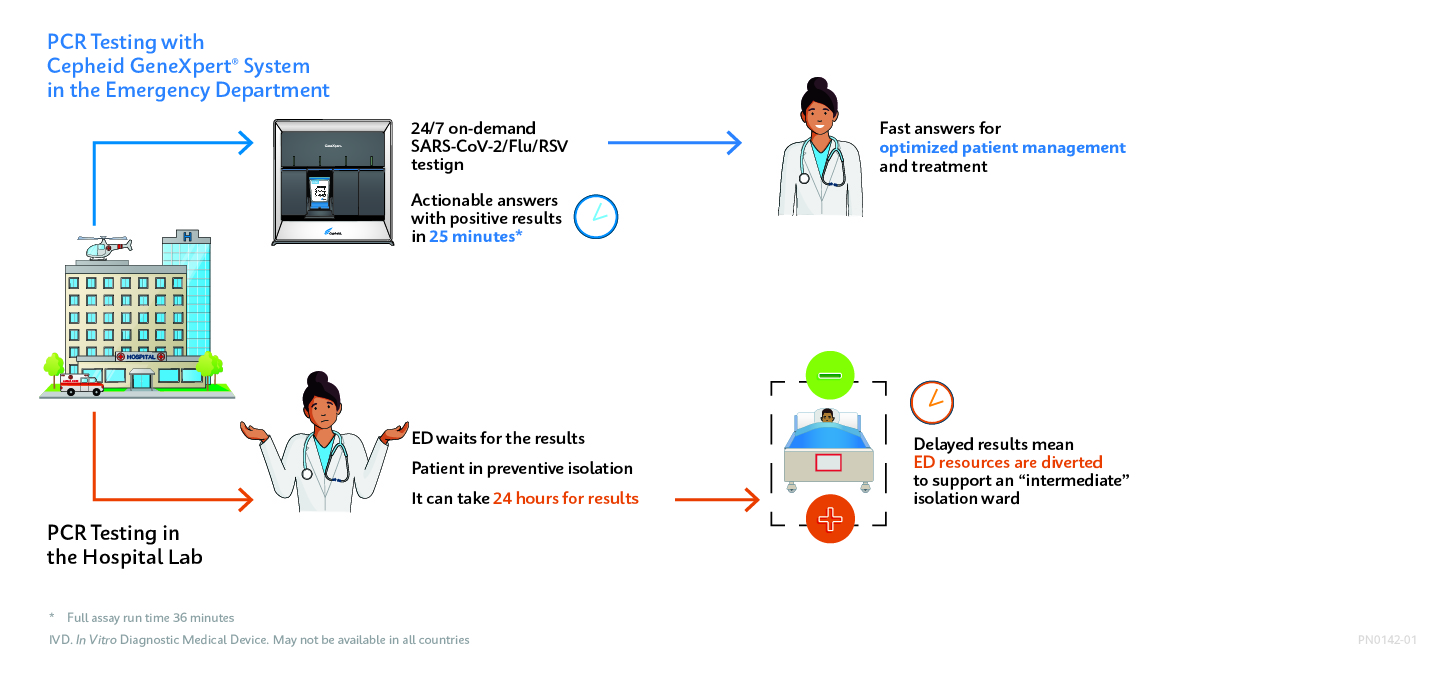Location / Language

Tags
- Region - Europe
- POC
- Covid-19
- Flu
- Setting - Hospital
2m Read
RESPIRATORY HEALTH
Impact Story
Norwegian ED Improves Resource Management with Rapid PCR Testing
After implementing respiratory infection testing that delivered test results in minutes rather than hours, the Emergency Departments at the University Hospital of North Norway were able to better manage hospital resources. Point-of-care PCR testing for SARS-CoV-2 with the Cepheid Xpert® Xpress CoV-2/Flu/RSV plus test helped the hospital both reduce costs and serve patients more effectively.
Patients who were tested for SARS-CoV-2 at the University Hospital of North Norway Emergency Departments (ED) often had to wait up to 24 hours for COVID-19 test results because tests could only be processed when the hospital lab was open during the day. Until results became available, patients were considered SARS-CoV-2 positive and had to stay in an “intermediate” isolation ward that required additional staff.
The hospital needed to be able to determine the respiratory infection status of ED patients more quickly, any time of day, to eliminate the need for the “intermediate” isolation ward, which was diverting staff resources from the ED. By decreasing the turnaround time and being able to get SARS-CoV-2 test results 24/7, the University Hospital of North Norway was able to optimize the use of clinical staff resources in the three network Emergency Departments in Tromsø, Harstad and Narvik. Prior to having access to point-of-care testing in the ED, nurses would collect samples from the patients and those samples would be sent to the hospital lab. The samples would be run when the lab was open during the day.
With the GeneXpert® system installed in the ED, trained nurses now collect and run the samples directly in the ED, without needing to wait for the lab to process them. The Xpert® Xpress CoV-2/Flu/RSV plus test enabled the ED team to find out if a patient is positive for COVID-19 in 25 minutes, regardless of hospital lab opening hours. Rapid results validate the infection status of the patients so quickly that the need for an “intermediate” ward was eliminated, freeing up valuable staff resources.

Reference: Customer Interview
Read Next
MORE






